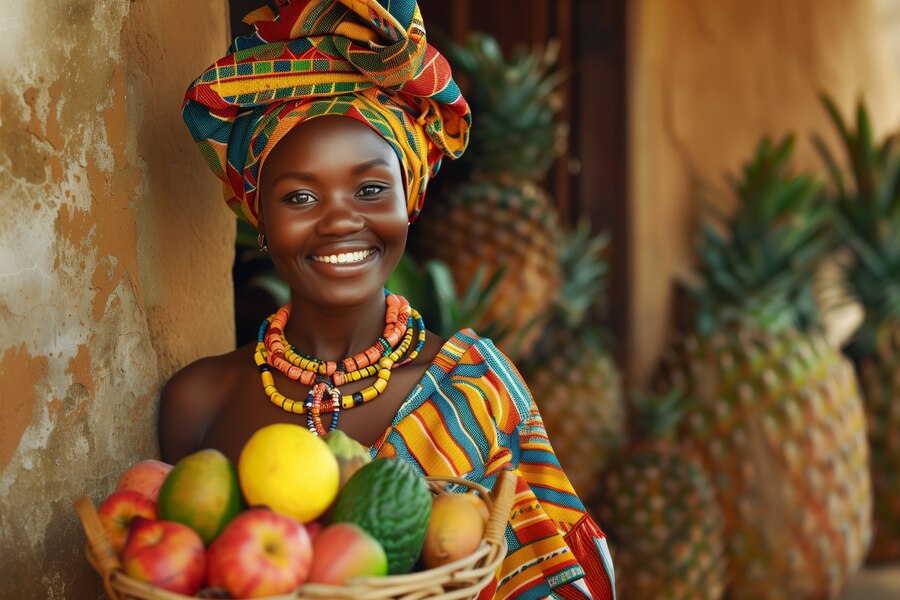Introduction
Nature never fails to flabbergast us with its amazing variety, and the human body is no exemption. We celebrate excellence in its bunch structures, yet a few highlights go past what’s commonly seen, making them both captivating and secretive. This brings us to an extraordinary subject: the “Unusual Award N.13: Extreme Gluteal Proportions in African Woman.” This phenomenon, recognized as an ‘unusual award’ in some circles, showcases extreme gluteal proportions, particularly among women of African descent.
What precisely does this mean? Also, why has it caught the creative mind of so many? In this article, we’ll investigate the starting points, importance, and ramifications of this exceptional quality, all while praising the excellence of variety. In this way, lock in for an excursion into quite possibly nature’s most captivating miracle!
The Origins of the Unusual Award N.13

A Historical Perspective
The fascination with extreme gluteal proportions is nothing new. In fact, it dates back centuries, particularly within certain African communities. This peculiarity isn’t only a cutting edge interest; it has profound roots in history and culture.
By and large, the ones who had these outrageous extents were much of the time respected in their networks. Their pronounced features were seen as symbols of fertility, health, and attractiveness. Many African tribes celebrated these women, honoring them through various cultural practices and traditions.
But why this specific feature? It’s accepted that the bigger gluteal extents were related with better abilities to childbearing, as well as an indication of riches and overflow. In a climate where assets were scant, having a more significant constitution could show admittance to better nourishment and a higher societal position.
Scientific Explanations
From an organic viewpoint, outrageous gluteal extents can be credited to a condition known as steatopygia. This condition is portrayed by the gathering of fat in the rump, an element that is especially predominant among ladies of specific African ethnic gatherings.
Steatopygia isn’t a problem but instead a characteristic transformation. A few anthropologists accept it might enjoy gave developmental benefits previously, assisting with managing internal heat level or giving energy saves during seasons of shortage. Curiously, this attribute is most usually seen in the Khoisan nation of Southern Africa, yet it can likewise be tracked down in other African populaces.
It’s vital to take note of that these outrageous extents are not demonstrative of corpulence. All things considered, they address an interesting body type, molded by hereditary qualities and natural variables.
Cultural Significance of the Unusual Award N.13
African Beauty Standards
In many African cultures, the beauty standards differ significantly from Western ideals. While Western societies often emphasize slimness, African cultures have traditionally valued fuller, more curvaceous figures. The “Unusual Award N.13: Extreme Gluteal Proportions in African Woman” exemplifies this preference, where larger buttocks are seen as a key aspect of femininity and desirability.
These excellence guidelines are profoundly imbued in African culture, affecting all that from design to media portrayal. As a matter of fact, numerous African ladies gladly praise their bends, embracing their normal physical make-ups without capitulating to outside tensions to adjust to Western standards.
This cultural celebration of curvaceousness extends to art, music, and even dance. Customary African moves frequently accentuate the development of the hips and posterior, further building up the meaning of this body part in social articulation.
Modern-Day Interpretations
In the present globalized world, the interest with outrageous gluteal extents has risen above social limits. Online entertainment stages like Instagram and TikTok play had a tremendous impact in this, where forces to be reckoned with and famous people grandstand their bends, frequently crediting their enticement for African legacy.
Notwithstanding, this cutting edge festivity isn’t without its debates. A few pundits contend that the emphasis on outrageous extents can sustain unfortunate self-perception principles. Others believe it commercializes and commodifies a natural feature that should be appreciated rather than exploited.
Despite the debates, it’s undeniable that the “Unusual Award N.13” has brought increased attention to the beauty and diversity of African women, encouraging conversations about body positivity and the acceptance of different body types.
FAQs About the Unusual Award N.13
1. What is the “Unusual Award N.13: Extreme Gluteal Proportions in African Woman”?
The “Surprising Honor N.13” alludes to the acknowledgment of outrageous gluteal extents saw in a few African ladies, especially because of a condition known as steatopygia. It praises the uniqueness and variety of the human body.
2. Is steatopygia common?
Steatopygia isn’t incredibly normal however is more pervasive among specific African ethnic gatherings, for example, the Khoisan nation of Southern Africa. It is a characteristic condition, not a clinical problem.
3. How is this phenomenon viewed in African culture?
In numerous African societies, outrageous gluteal extents are viewed as an indication of excellence, ripeness, and wellbeing. These features are often celebrated and admired within the community.
4. What’s the impact of social media on the perception of extreme gluteal proportions?
Social media has both amplified and complicated the perception of extreme gluteal proportions. While it has allowed for a celebration of diversity, it has also led to concerns about body image and the commercialization of this unique feature.
Embracing Diversity: Why the Unusual Award N.13 Matters

Body Positivity and Representation
The “Unusual Award N.13: Extreme Gluteal Proportions in African Woman” is something other than an oddity; it’s a strong sign of the excellence in variety. In reality as we know it where certain body types have been admired to the detriment of others, this acknowledgment features the significance of embracing all shapes and sizes.
Body energy developments have picked up speed all around the world, pushing for the portrayal of various body types in media and design. The festival of outrageous gluteal extents lines up with these endeavors, testing tight magnificence principles and empowering a more comprehensive perspective on being wonderful.
The Importance of Cultural Respect
While it’s fundamental to appreciate and celebrate variety, it’s similarly essential to do as such with deference. The “Uncommon Honor N.13” ought not be seen from a perspective of exoticism or fetishization. All things being equal, it ought to be viewed as an acknowledgment of the rich social legacy and remarkable organic qualities that make mankind so captivating.
Understanding the verifiable and social setting of this peculiarity permits us to see the value in it such that praises the people and networks it addresses.
Looking Ahead: What’s Next?
As society keeps on developing, so too will our comprehension and enthusiasm for variety. The “Unusual Award N.13: Extreme Gluteal Proportions in African Woman” may spark conversations, inspire research, and encourage more inclusive beauty standards.
What’s in store holds the commitment of more noteworthy portrayal and acknowledgment of all body types. As we push ahead, we should commend the uniqueness of each and every person, perceiving that excellence isn’t one-size-fits-everything except a rich embroidery of various structures, each with its own story to tell.
Conclusion
The “Unusual Award N.13: Extreme Gluteal Proportions in African Woman” is a demonstration of the unimaginable variety of the human body. It advises us that excellence comes in many structures and that what makes us different likewise makes us exceptional. As we proceed to investigate and comprehend these one of a kind qualities, we should would so with an open care and a profound regard for the way of life and people who epitomize them.
Eventually, it’s not just about celebrating outrageous gluteal extents; about perceiving and valuing the tremendous variety exists inside humankind. All things considered, isn’t that the thing makes life so magnificently interesting?

